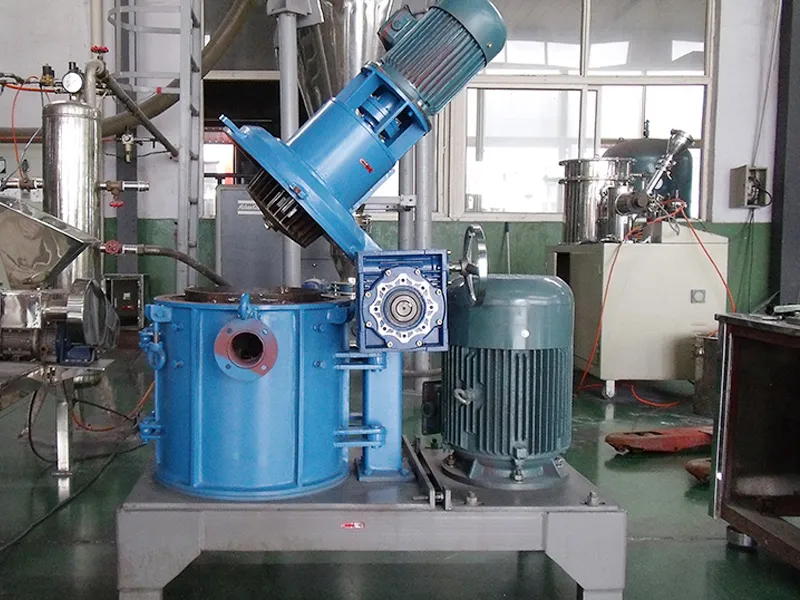In today’s industrial world, the demand for fine powders has increased significantly. To meet this demand, various grinding technologies have been developed. One such technology is the Air Classifier Mill, which is widely used in industries such as pharmaceuticals, chemicals, and food processing. This article aims to explain how an Air Classifier Millworks and its key components.

Working Principle:
The Air Classifier Mill operates on the principle of impact grinding. It consists of a grinding chamber, an air classifier, and a blower. The material to be ground enters the grinding chamber through a feed inlet. Inside the chamber, a series of rotating hammers or pins impact the material, causing it to break into smaller particles.
At the same time, high-speed air from the blower enters the grinding chamber through the classifier. The classifier separates the fine particles from the coarse ones. The fine particles are carried by the air and collected in a cyclone separator or a bag filter, while the coarse particles are returned to the grinding chamber for further grinding.
Key Components:
- Grinding Chamber: The grinding chamber houses the rotating hammers or pins that impact the material. It is designed to ensure efficient grinding and minimize heat generation.
- Air Classifier: The air classifier is responsible for separating the fine particles from the coarse ones. It uses centrifugal force and airflow to achieve this separation. The design of the classifier determines the size and efficiency of the separation process.
- Blower: The blower provides the high-speed air required for the grinding process. It creates a strong airflow that carries the fine particles to the collection system.
- Cyclone Separator/Bag Filter: The cyclone separator or bag filter is used to collect the fine particles separated by the air classifier. It ensures that only the desired product is collected, while the air and any remaining coarse particles are discharged.
Advantages of Air Classifier Mill:
- Fine Particle Size Control: The Air Classifier Mill offers precise control over the particle size distribution, allowing manufacturers to produce fine powders with consistent quality.
- High Efficiency: The grinding process in an Air Classifier Mill is highly efficient, resulting in reduced energy consumption and increased production rates.
- Versatility: The Air Classifier Mill can handle a wide range of materials, including heat-sensitive and abrasive substances. This makes it suitable for various industries and applications.
The Air Classifier Mill is a versatile and efficient grinding technology that plays a crucial role in many industries. Its ability to produce fine powders with precise particle size control makes it a valuable tool for manufacturers. By understanding how an Air Classifier Millworks and its key components, industry professionals can optimize their grinding processes and achieve desired product specifications.
